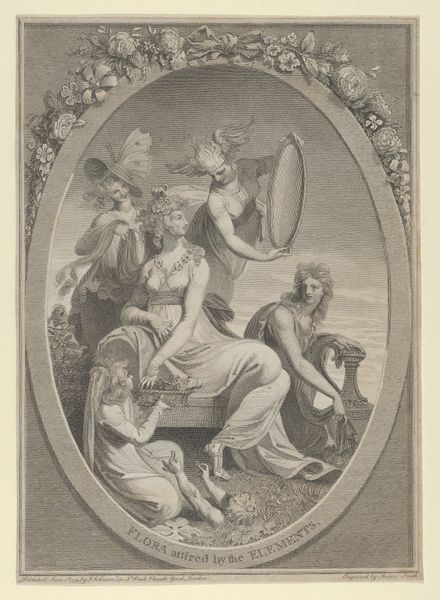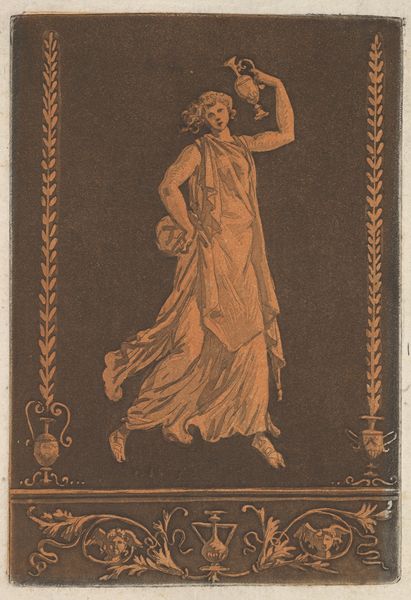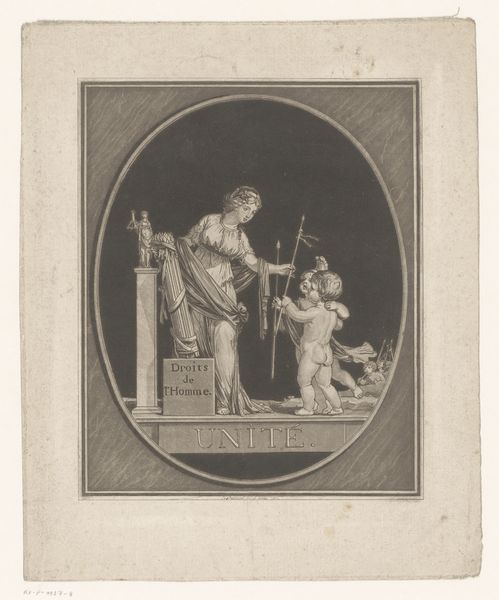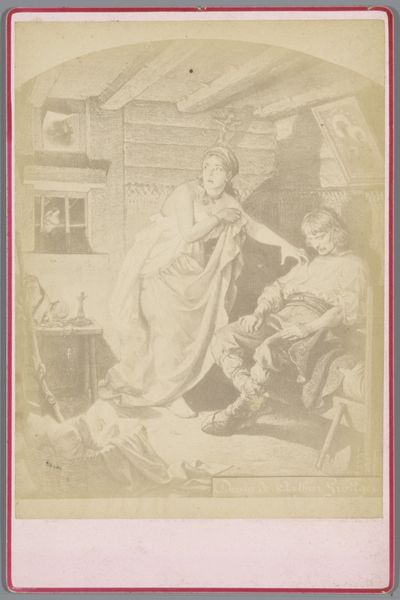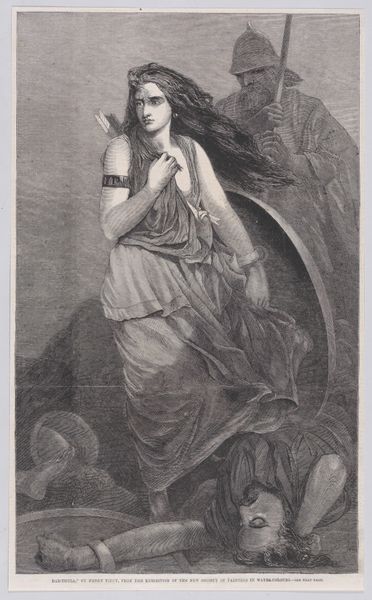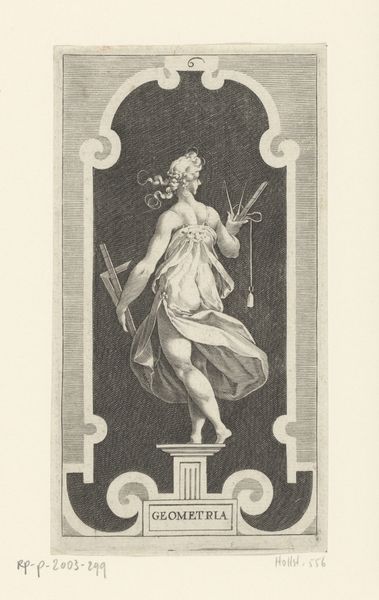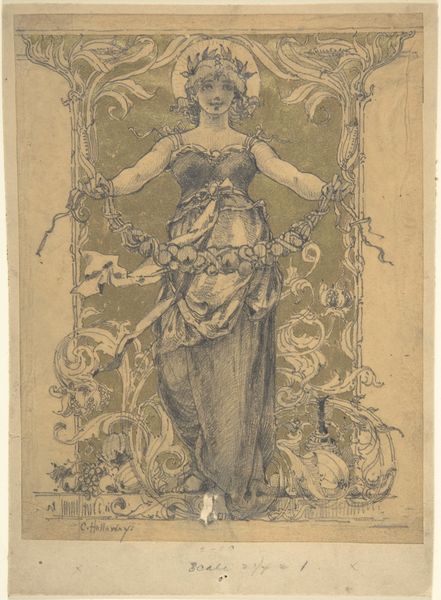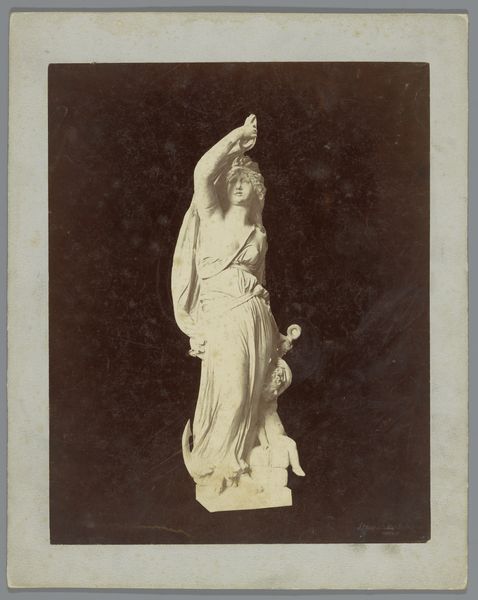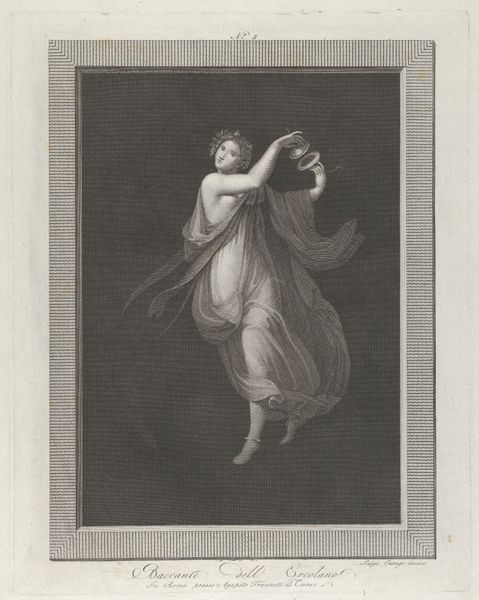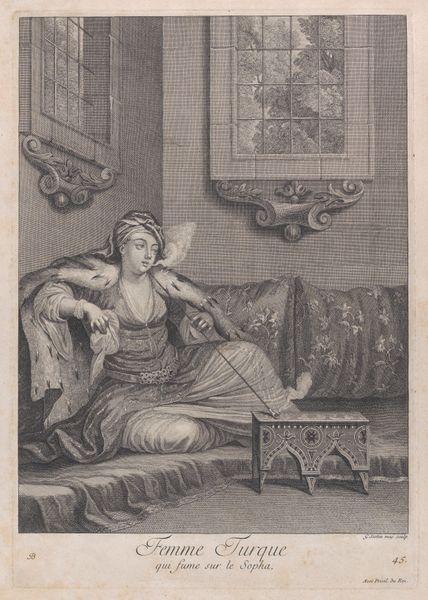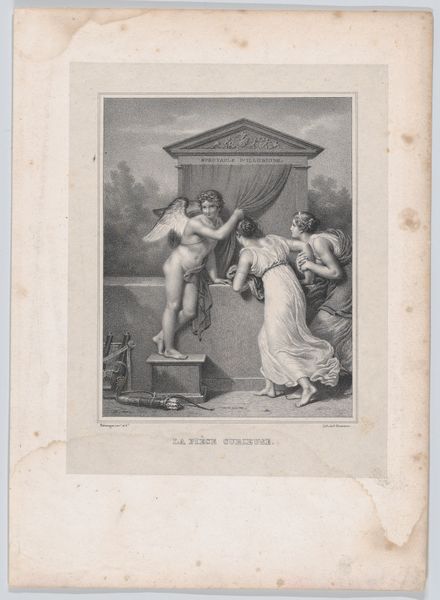
drawing, print
#
drawing
#
neoclacissism
#
allegory
# print
#
landscape
#
perspective
#
figuration
#
history-painting
#
academic-art
Dimensions: Plate: 18 7/8 x 13 1/2 in. (48 x 34.3 cm) Sheet: 19 1/2 x 14 in. (49.5 x 35.5 cm)
Copyright: Public Domain
Ridé created "The Genius of Architecture," as an engraving in the late 1700s. This neoclassical print reflects the period's fascination with reason, order, and the classical world, yet it simultaneously obscures the real-world conditions in which such grand designs take shape. The central female figure embodies architecture, elegantly posed with tools that symbolize precision. Her serene, almost detached gaze, contrasts starkly with the labor and materials required to realize architectural visions. The cherubic figure beside her, diligently at work, adds a layer of innocence to the complex process of creation. In many ways this becomes a commentary on who gets to be the architect, and who becomes the unseen laborer. Note the pyramid in the background, a nod to ancient grandeur, yet one that obscures the exploitation of labor inherent in its construction. As you consider this artwork, think about the narratives it upholds and those it silences. How does it invite us to reflect on the power dynamics embedded within the built environment?
Comments
No comments
Be the first to comment and join the conversation on the ultimate creative platform.
